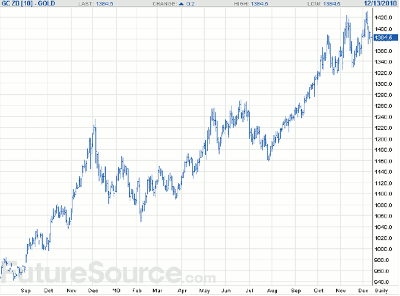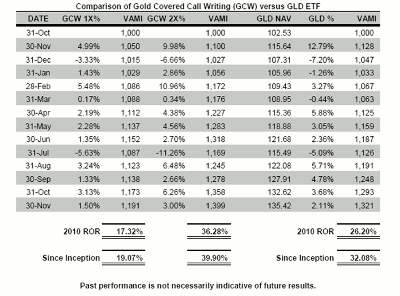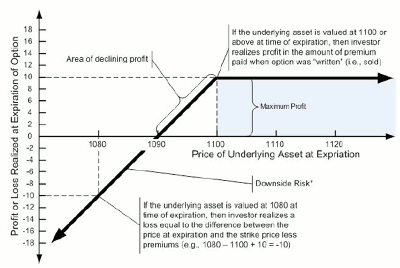By Nell Sloane of Capital Trading Group
Mark Twain thought diversification was a fool’s game:
"Behold, the fool saith, 'Put not all thine eggs in the one basket' which is but a manner of saying, 'Scatter your money and your attention,' but the wise man saith, 'Put all your eggs in the one basket and…watch that basket.'"
Such is the wit and wisdom of Mark Twain that he succinctly encapsulated the problem facing investors both then and now. At issue is the tradeoff between lower volatility and muted returns resulting from diversification versus increased volatility but potentially higher returns from focused investment choices.
Take for example an investment portfolio made up of mining shares only. If you were to invest in all of the mining stocks available in the US markets, then your returns would reflect the general direction of all such mining stocks. The systematic return of the market, such as a portfolio of mining stocks, is often referred to as "beta." However, if you were to invest selectively in only a few of these mining stocks, or time when you bought and sold them, then your skill would have a greater influence on your overall returns. Such skill-based investment decisions are called "alpha" by portfolio managers.
This issue becomes acute when investing in commodity assets such as gold or silver. Unless you are engaged in the timing of when to buy and sell, you are basically beholden to the ups and downs of the market over which you have no control. So what is an investor to do?
Until the millennium, there were only a few ways to invest in gold and silver. One could purchase the physical asset in the form of bullion, coins or jewelry; or you could invest indirectly via mining stocks or related companies. Alternatively, you could trade precious metals futures contracts.
There is, however, another way of investing in metals called managed futures. Sophisticated investors have long known about managed futures as an arena in which to obtain skill-based returns from professional money managers. Not only that, unlike the hedge fund universe, this sector of the industry is highly regulated and accessible to small and large investors alike.
As a managed futures specialist, it is my job to scour the universe of managers, called commodity trading advisors, or CTAs, and help my clients allocate to these specialists. What I want to tell you about today is a managed futures program that trades gold and really impressed me as being unique.
Most CTA programs are active traders. In fact, one could say that the primary source of returns in managed futures is skill-based. The problem with a pure trading approach, however, is that it doesn't provide an asset-based return (i.e. beta) that investors may be seeking to enhance their overall investment portfolio. Not so with the gold covered call writing program. Like gold ETFs, the program invests in gold only from the long side, which is unlike other managed futures programs. The gold covered call writing strategy maintains a perpetual long-only gold futures position, which essentially duplicates the exposure to gold prices. But there is another dimension to this strategy that is value-added and comes from using call and put options to both generate income and provide downside risk protection.
Article Continues on Page 2 |pagebreak|
A great way to understand how such an approach can provide risk-adjusted performance is to compare the returns of gold ETFs with the returns of the gold covered call writing program. But first, let's take a look at a chart that shows just how volatile gold has been in the last year:
Until September 2009, gold was trading in a sideways range. Then the market turned bullish and spiked up to 1250 during November. In December 2009, however, gold prices dropped dramatically and then entered into a very choppy range that continued until April 2010, at which point it resumed a bullish trend until it fell back again in July and August 2010. The beginning of August 2010 began another leg in gold's bull market as a result of the Federal Reserve's hints that it would resume another round of quantitative easing. As this expectation became built into market, gold became choppy into the end of the year.
Obviously, 2010 was a bullish year for gold, However, it is important to note that past performance is not necessarily indicative of future results. The question is, where does gold go from here?
Now here is a comparison of the performance returns between the most popular gold ETF, GLD, and the gold covered call writing program since inception through November 2010:
What is notable is that in four out of thirteen periods, GLD suffered down months, while the gold covered call writing program only suffered two down months. And in various periods, this strategy outperformed GLD with less volatility overall. Additionally, a levered approach involving only half the investment required clearly outperformed GLD in overall returns. How can this be the case?
The answer is in the use of options, specifically the covered call writing strategy. Covered call writing is the name given to the strategy in which one sells a call option while simultaneously owning the underlying asset. This approach works best in a mildly bullish or neutral market conditions, and even incorporates limited insurance to the downside if the asset declines somewhat. Further downside protection for this program comes in the form of put buying, which provides even more downside insurance.
Article Continues on Page 3 |pagebreak|
What makes the gold covered call writing program so interesting is that the income stream generated from selling covered calls is similar in concept to gold loans, which evolved in the 1980’s. This activity came about as a means for central banks to earn a return on their inventories to cover warehousing costs. In other words, if gold trades sideways, the program still has the potential to generate positive returns, unlike gold ETFs, whose net-asset values (NAVs) will remain stagnant in range-bound conditions.
The graph below provides an illustration of how the covered call strategy works. When selling options, one receives a premium for insuring the strike price. If the market goes above the strike price and is exercised, then the long position is delivered against the strike price. However, you keep the premium.
Since the program launched, it has been capturing between 2% and 3% in net premiums per expiration cycle. In the real world, however, gold prices are volatile and go down as well as up, which in turn will impact the monthly returns of the program. Nevertheless, it is expected that the premiums captured from writing calls will over the long run reduce such volatility, and so far, that has been the case.
One thing to note, however, is that the covered call strategy does limit profit potential, as the performance table shows. Accordingly, investors may not fully participate in a strong upward move like what happened to gold in November 2009, or August to October 2010, unless the call is rolled to a higher strike. This is where the skill-based aspect comes into play with the CTA making such trading decisions. Part of this discretion includes the purchase of puts, which acts like insurance in order to further protect downside volatility.
There is still another aspect of this program that makes it much different from gold ETFs. Institutional investors like to be efficient with the use of investment capital, and thus, they often use leverage to achieve their goals. Given current prices, in order to have the same exposure as one gold futures contract, you would have to invest around $139,000 in the ETF GLD. The gold covered call writing program, however, achieves the same exposure with just a $50,000 investment, resulting in approximately 2.75-to-one leverage. Further, because the margin requirements to maintain the position are typically less then $10,000 per $50,000 invested, the program can be funded with $25,000 actual funds and $25,000 notional funds.
Please note that the use of leverage can work both for you and against you, and investors should first make sure they fully understand this important factor when investing in managed futures. If you want to learn more about the use of margin in managed futures, we would be happy to explain.
In summary, the performance of the gold covered call writing program is derived from a combination of the underlying long gold futures contract, the "covered call" strategy (premium capture) net the cost of "put insurance" to limit downside risk, and leverage as a function of the futures contract's face value.
So to review, the gold covered call writing program provides an alternative way to invest in gold that is both transparent and liquid due to its "separately managed accounts" structure. It encompasses leverage, which enables a $50,000 investment (or less) to be equal to the face value exposure of one futures contract (price/ounce x 1000). And the program uses options in order to generate an income stream from premium capture, as well as provide limited downside risk protection. Year-to-date, the program is up +17.32% through November, and +19.07% since inception.
By Nell Sloane of Capital Trading Group
Learn more about this strategy at Neil’s Web site, e-mail him at nsloane@ctgtrading.com, or call (800) 238-2610.
























